Small Block
Chevrolet produced two types of crankshafts, forged steel
and nodular iron. A simple way to identify them is by checking
the parting line. This line was a result of the two halves
of the crankshaft mold that produced the crankshaft itself.
On a nodular iron unit this line is about 1/32-inch wide
and is raised above the surface. The forged steel line is
anywhere from 1/4-inch to 1/2-inch side and is essentially
flush.
Chevrolet generally used the nodular iron unit on engines
with low to medium horsepower ratings and the forged steel
in engines with higher horsepower ratings.
The casting number is located on the rough surface of
one of the counterweights or between the bearing journals.
See the chart for casting number
identification.

265 - 1955 through 1957
The
265 crankshaft is forged steel. The flange was carried
over to the 283 crankshaft.
 |
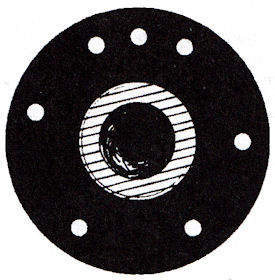 |
|
|
283 - 1957
through 1967
The 283 crankshaft was basically
unchanged from 1957 through 1967 although different
materials were used, nodular iron and forged steel,
based on the application. All were a 3.00-inch stroke
and have 2.00-inch rod journals and 2.30-inch main
journals.
 |
 |
|
|
302 - 1967 through 1969
The 1967 302 crankshaft was a small journal (2.00-inch
rod journals and 2.30-inch main journals) while
all 1968-69 302 crankshafts are large journal (2.10-inch
rod journals and 2.45-inch main journals) and all
were 3.00-inch stroke. All are forged steel and
Tuffrided. |
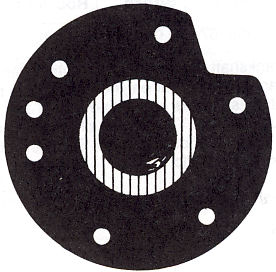 |
|
|
327 - 1962 through 1967
All
1962-67 327 crankshafts are forged steel and have
3.25-inch stroke with 2.00-inch rod journals and
2.30-inch main journals.

1962-1964 'small journal' 327 crankshaft. |

Early (1962-1964) flange design.
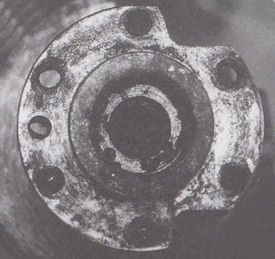
Late (1965-1967) flange design. |
|
|
307 - 1968 through
1973
All 1968-73 307 crankshafts are nodular
iron. This is interchangeable with the 1968-69 327
crankshaft; only difference is the flywheel flange
shape. All 307 crankshafts were 3.25-inch stroke
with 2.10-inch rod journals and 2.45-inch main journals |
 |
|
|
327 - 1968-69
This crankshaft
is a large journal and made in both cast iron nodular
and forged steel. All 300HP and below engines received
the cast iron crankshaft, others are forged
steel. Same basic design
as the 307 crankshaft with 3.25-inch stroke, 2.10-inch
rod journals and 2.45-inch main journals. |
 |
|
|
350 - 1967 through 1969
The
only large journal crankshaft used in 1967 as was
exclusive to the SS350 Camaro and is forged steel.
The 1968 & 1969 crankshafts were available in
both forged steel and cast nodular iron and have
3.48-inch stroke, 2.10-inch rod journals and 2.45-inch
main journals. |
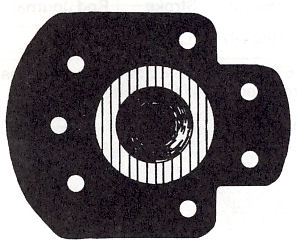 |
W-Block
| |
|
348/409 - 1958-1965
All 348
and 409 crankshafts are forged steel.
 |
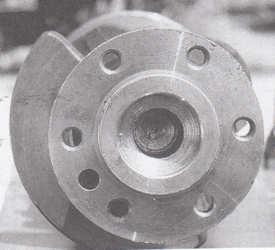 |
|
|
Big Block - Mark IV
| |
|
396/402/427 - 1965 through 1972
The 396 crankshaft is the same as the 427 crankshaft
except it is lighter due to the counterweight design.
The third counterweight on a 396 crankshaft is 3/4"
wide, the 402 is 7/16" wide, and the 427 is
7/8" wide.
Prior to 1968 all 396 crankshafts were forged
steel. In 1969 the lower horsepower engines used
a cast iron crankshaft and have 3.76-inch stroke,
2.20-inch rod journals and main journals were different
sizes; journals 1 thru 4 are 2.7475-inch while journal
5 is 2.7488-inch.
All 1965-1967 427 crankshafts
were forged steel. For 1968 & 1969, only high
performance 427s used a forged steel crankshaft
where low performance 427s used a cast iron crankshaft.
|
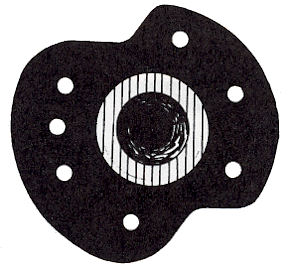 |
|
|
454 - 1970-75
The 454 crankshaft
has the same flange as other big block crankshafts
but is totally different in design. Unlike the 396/402/427
crankshaft, the 454 crankshaft is externally balanced
at the front damper and flywheel flange. The 454
crankshaft has a 4.00-inch stroke but the same rod
an main journal size as the 396/402/427. |
 |
|


Mac's Registries
More Mac's Registries
See more about Chevrolet/Camaro/Monte Carlo/Nova/HHR/SSR/Acadian/Beaumont registries
here ↓

Chevrolet Clubs

|



















